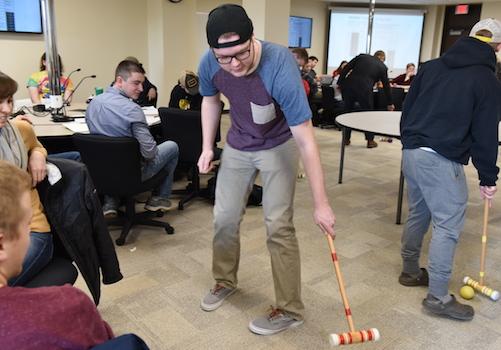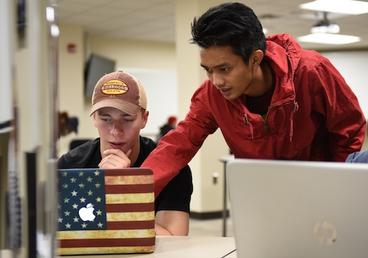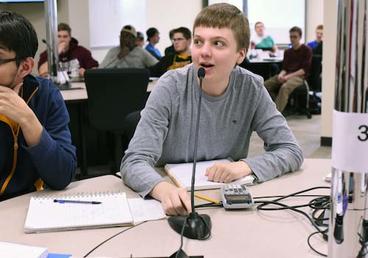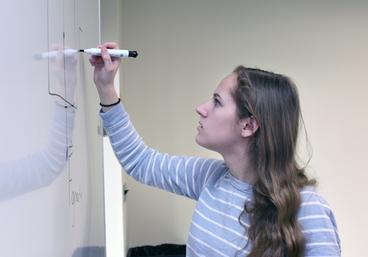TURNING CLASSES UPSIDE DOWN
The physics department has nabbed the newest Active Learning Classroom (ALC) because of the high demand for calculus-based physics classes. More than half of all of UMD science majors need calculus-based physics.
"Students who learn in ALC are more engaged and more likely to stay in their program," said UMD Physics and Astronomy Department Chair Marc Seiger. Seiger's already seen how UMD ALCs have transformed the classroom experience. "Open the door a crack and you'll hear laughter, lively discussion and an occasional, 'I've got it, I've got it,'" he said.
Hands-on classes:
* Allow students to better grasp the material
* Result in stronger programs and higher retention rates
* Make difficult classes, such as physics, more enjoyable
WHY ALC'S WORK
Classes that can be taught interactively, with multimedia, are popping up throughout the country. Why? They work.
* The classrooms are "decentralized," which has an interesting effect. The students are more accountable for their learning.
* Motivation increases because the students aren't stuck in a lecture hall.
* Students feel like they can participate more in class because the lessons become more stimulating.
OPTIONS FOR PRESENTING MATERIAL
Instructors find it easy to mix it up in the ALC. They can introduce a concept in the first minutes of class and go interactive from there, or they might assign pre-class information, such as real-world case studies, readings, and videos. When these and other techniques are used, most of the in-class work is discovery-based.
* Large white boards along the walls, one for each table, allow easy visibility for solving problems in groups.
* Students bring their own laptops to connect to televisions that broadcast to their small group or throughout the room.
* The ALC understands that some experiments must be seen to be understood.
All these methods working together allow students to work collaboratively to form conclusions about a lesson and understand correct methods to use for a given problem.
THE STUDENT NUMBERS GAME
The room full of technology looks like a maze at first. Six tables of nine allow for 54 students to engage in problem-solving activities. Each table has three microphones, a television, and a whiteboard to accommodate the various approaches an instructor may take to teach a given lesson. Groups of three can pull apart a section of the main table and set up a mini work space.
INSTRUCTORS TURN INTO COLLABORATORS
A podium provides the power for instructors to manipulate the classroom. They can project onto two screens and/or the nine televisions in the room.
Involving students in demonstrations makes the classroom versatile and exciting, with endless options to digest a lesson.
When there is a need to apply a lesson to reality, a large area in the center of the room allows for demonstrations to be seen by all students. A sink in the corner allows for easy clean up when liquids are used in the demonstration."It's been an exciting adventure," said Brian Gute, an instructor in the Department of Chemistry and Biochemistry.



